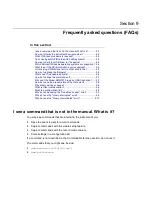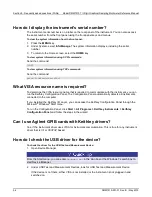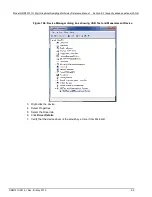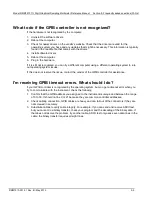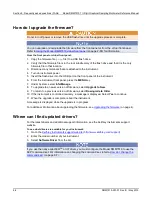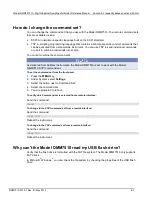
Section 8: TSP command reference
Model DMM7510 7½ Digit Graphical Sampling Multimeter Reference Manual
8-362
DMM7510-901-01 Rev. B / May 2015
Details
This setting determines if the instrument sends an abort message when it attempts to connect to a
TSP-enabled instrument using the
tspnet.connect()
function.
When you send the abort command on an interface, it causes any other active interface on that
instrument to close. If you do not send an abort command (or if
tspnet.tsp.abortonconnect
is
set to 0) and another interface is active, connecting to a TSP-enabled remote instrument results in a
connection. However, the instrument will not respond to subsequent reads or executes because
control of the instrument is not obtained until an abort command has been sent.
Example
tspnet.tsp.abortonconnect = 0
Configure the instrument so that it does not
send an abort command when connecting to
a TSP-enabled instrument.
Also see
(on page 8-354)
tspnet.tsp.rbtablecopy()
This function copies a reading buffer synchronous table from a remote instrument to a TSP-enabled instrument.
Type
TSP-Link accessible
Affected by
Where saved
Default value
Function
No
Usage
table
= tspnet.tsp.rbtablecopy(
connectionID
,
name
)
table
= tspnet.tsp.rbtablecopy(
connectionID
,
name
,
startIndex
,
endIndex
)
table
A copy of the synchronous table or a string
connectionID
Integer value used as a handle for other
tspnet
commands
name
The full name of the reading buffer name and synchronous table to copy
startIndex
Integer start value
endIndex
Integer end value
Details
This function is only appropriate for TSP-enabled instruments.
This function reads the data from a reading buffer on a remote instrument and returns an array of
numbers or a string representing the data. The
startIndex
and
endIndex
parameters specify the
portion of the reading buffer to read. If no index is specified, the entire buffer is copied.
The function returns a table if the table is an array of numbers; otherwise a comma-delimited string is
returned.
This command is limited to transferring 50,000 readings at a time.
























